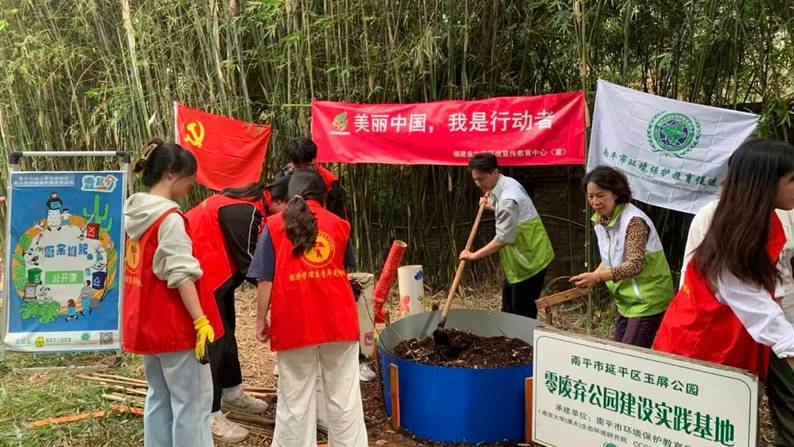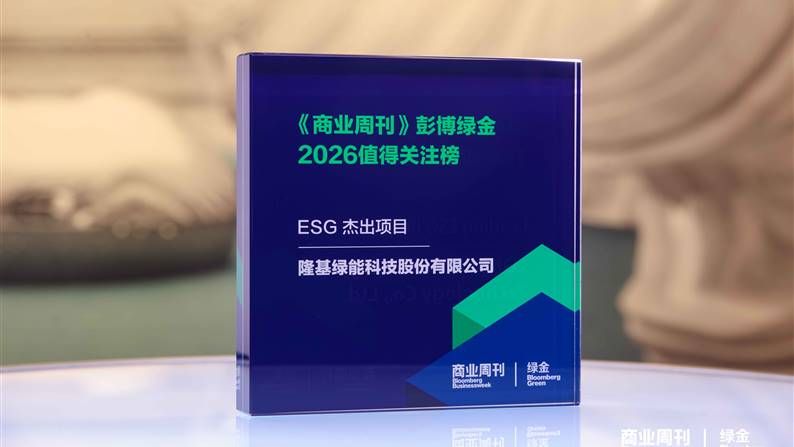

Since China put forward the goals of "2030 carbon peak" and "2060 carbon neutral" in September 2020, a national "double carbon" test has been put into practice in all walks of life.
Among them, as the core unit of industrial agglomeration and development and an important carrier of industrial green development and urbanization, the zero-carbon transition is imminent.
On the national level, Chinese industrial energy consumption accounts for more than 60% of the total national energy consumption, while nearly 70% of industrial energy is concentrated in various industrial parks. The park's carbon emissions account for about 31% of the total national emissions. Therefore, the low carbon transformation of industrial parks is the inevitable path for our country to realize the double carbon goals.
From the perspective of economy, according to preliminary estimates of relevant institutions, zero-carbon industrial parks will contribute at least 15% of the emission reduction for the national "dual-carbon" goal, which directly drives the implementation of technological innovation and zero-carbon solutions made of intelligent equipment, and is expected to bring about 30 trillion yuan of investment demand in the future.
From the perspective of the market, with the promotion of the global two-carbon strategy, more and more countries require all kinds of industrial products entering their countries to realize carbon footprint tracking, forcing the zero-carbon transformation of Chinese manufacturing, and zero-carbon parks can help Chinese enterprises to achieve low-carbon product production.
From the perspective of policy, in October 2021, The State Council issued the Notice of Action Plan for Achieving the Carbon Peak before 2030, to build 100 urban parks, and to build "smart parks", "low-carbon parks" and "zero-carbon parks", which were listed in the development focus of the government Work Report 2022 by more than 10 provinces and cities. It will become the action guide for local governments at all levels to construct the next generation of parks.
On the
whole, traditional industrial parks have begun to lose their competitiveness
under the background of carbon neutrality, so the construction of zero-carbon
parks is imperative.
Focusing on the goal of "double carbon" and based on the digital transformation of smart parks, implementing the concept of carbon neutrality, innovating zero-carbon scenarios and integrating zero-carbon applications have become the mainstream direction of the construction of zero-carbon smart parks.
In this case, as the builder and pioneer of the zero-carbon smart park, Sunwoda takes the enterprise's own zero-carbon demand as the starting point, relies on the company's power battery production bases built all over the country to create a zero-carbon smart park for lithium electricity industry. With seven core technical capabilities, Sunwoda provides zero-carbon park solutions for various industries and helps realize the national dual-carbon goal.
Recently, Gaogong Lithium Power and Meng Xiangjun, general manager of Sunwoda Smart Energy, had an in-depth dialogue, discussing the original intention and choice of Sunwoda to enter the field of zero-carbon smart park, market layout direction, construction path and core competitive advantages and other topics.
Sunwoda into the Bureau of Zero-Carbon Intelligent Park
Zero-carbon itelligent park refers to the systematic integration of the concept of smart energy and low-carbon development into the whole process of comprehensive planning, construction and development of the park, and the control of land use, energy and construction, resources and environment, transportation, management and other aspects. Through the construction of renewable energy, comprehensive utilization of energy-saving and emission reduction technologies, carbon trading, green electricity and other ways, the Internet of Things, big data and platform technologies are fully utilized to minimize carbon emissions, achieve the recycling of resources, realize the green transformation of the park, and basically achieve the self-balance of carbon emissions and absorption within the park. We will build a new intelligent park that deeply integrates production, ecology and life.
As a leading new energy enterprise in the industry, on the basis of consolidating the 3C digital battery business and expanding the development of power battery business, Sunwoda combines the company's resource advantages and extends its business tentacles to another larger track -- zero carbon Park.
On May 15, Sunwoda and Zaozhuang High-tech Zone Management Committee reached a strategic cooperation on the investment, construction and operation of the Zaozhuang High-tech Zone "zero Carbon Park" project.
On May 31, Shenzhen Sunwoda Intelligent Energy Co., LTD. (hereinafter referred to as Sunwoda Intelligent Energy), a wholly-owned holding company of Sunwoda, reached a strategic cooperation with the People's Government of Lanxi City, and the Sunwoda "Zero Carbon Park" project was settled in Lanxi.
According to relevant agreements, Sunwoda will lead the construction of photovoltaic, energy storage, substation and other projects in Zaozhuang and Lanxi respectively. The projects will focus on building green and low-carbon demonstration parks, and building a comprehensive intelligent energy system with interconnection and interaction of "source network, charge and storage" and multi-energy complementary. After the completion of the project, it will realize the consumption of new energy locally, meet the green electricity demand of enterprises in the park, greatly reduce the electricity cost of enterprises, provide better comprehensive energy services for the two places, promote the clean and low-carbon energy transformation of the two places, and promote the coordinated and sustainable development of energy and ecology.
Meng Xiangjun, general manager of Sunwoda Intelligent Energy, said to Gaogong Lithium Power that the signing of the above two "zero-carbon park" projects marks the formal extension of Sunwoda to industrialization on the basis of "distributed energy system demonstration project of multi-energy complementary integration and optimization", and Sunwoda zero-carbon intelligent Park business has taken a key step from case demonstration to industrialization promotion.
Meng Xiangjun pointed out that Sunwoda cut into the zero-carbon park circuit, on the one hand is due to the company's own power battery industry base construction and battery products decarbonization of the zero-carbon demand; On the other hand, the key technologies and integration experience accumulated by the company in the planning, construction and operation of the zero-carbon park in the early stage, as well as the measurement boundary of the comprehensive energy system of the park under the national "dual-carbon" goal are gradually developing in a direction conducive to commercialization, which provides favorable conditions for Sunwoda to layout the zero-carbon park business.
In fact, Sunwoda began to explore the industrialization of the zero-carbon park very early, and combined with its own business layout to create a demonstration project.
In 2017, Sunwoda led the national key research and development program "Distributed Energy System Demonstration Project of Multi-energy Complementary Integration and Optimization", accumulated a series of key technologies and integration experience around the park's comprehensive energy planning, construction, operation and other aspects, and built its own "near zero carbon park" demonstration before the concept of "zero carbon park" was widely recognized.
Among them, the integration of "source network, load, storage and cloud" is the key path to realize the zero-carbon park. Sunwoda summed up the composition of the zero-carbon smart park as "five sources, four networks, three charges, two storages and one cloud".
"Five sources" refers to five types of clean energy, including photovoltaic power generation, wind power generation, gas distribution, biomass power generation and hydrogen energy. "Four networks" refers to four types of transmission network in the park, including power network, hot network, cold network and information network. "Three loads" refers to three types of target loads of the zero-carbon park, namely commercial/public buildings, factories and transportation; "Two storage" refers to two types of energy storage, namely electricity storage and heat storage (cold storage); "Yiyun" refers to the digital carbon management platform deployed in the cloud.
Meng said the construction of a zero-carbon smart park is a complex system that requires support from a number of core technologies. Based on its own practice, Sunwoda has built 7 core technology capabilities to enable the construction of zero-carbon smart park, which can provide customers with deeply customized and systematic services.
At the same time, Sunwoda energetic carbon data management platform has been collaborating with its industrial internet platform, committing to achieve interactive fusion between internet of industry and energy in the industrial park.
Sunwoda Zero-carbon Intelligent Park Planning Scheme
On June 2022, Sunwoda issues “double-carbon” programme that corresponds to corporation’s development direction. The programme promotes corporation’s “double-carbon” strategy from operation management, discharge structure, brand construction, industry promotion and reduce of pollution and carbon.
“Sunwoda’s large manufacturing bases that are built and building will be the first batch of customers of company’s zero-carbon intelligent park, to help to achieve Sunwoda’s project of carbon neutrality through demonstration and practice of internal project.” Said Meng.
It is worth noting that apart from building a bluster of zero-carbon intelligent park of lithium industry, Sunwoda will emphatically focus on three zero-carbon application scenes, to create one-stop solution in the full process.
Focusing on industrial park、large factories, Sunwoda will firstly build low-carbon and near-zero park through distributed clean energy as well as deeply tap the conserving energy potential and deploy energy carbon data management platform. By building centralized clean energy nearby and introducing it into the park, the proportion of green electricity in the park will be greatly increased, and the net-zero carbon park will be built by combining green electricity and green certificate trading.
Centering on public buildings and commercial complexes, Sunwoda zero-carbon programme mainly adopts energy-saving technologies such as clean heating and efficient refrigeration, supplemented by distributed energy and energy storage, to achieve clean, efficient and economic energy utilization. At the same time, comprehensive digital energy management is implemented, and expert algorithms and AI algorithms are combined for continuous energy utilization optimization diagnosis, further reducing users' operating costs.
Focusing on electricized transportation, Sunwoda will deploy "super" charging + energy storage + photovoltaic to solve the problem of mileage anxiety of car owners and load impact of high-power charging. Sunwoda is committed to creating a green, low-carbon, convenient and friendly way of travel, and deploys an energy management platform in the cloud to realize controllable resource polymerization of multiple charging stations and participate in electric auxiliary services.
In this process, Sunwoda can provide customers with one-stop services including evaluation planning, investment operation, design and construction, digital empowerment, project operation and so on.
Meng Xiangjun pointed out that the zero-carbon smart park business is the development and exploration of Sunwoda's diversification in its own industry, which will help promote the further development of the company's existing lithium energy storage and power battery business. The implementation of the zero-carbon park concept in Sunwoda's own industrial park will help the group's entire manufacturing platform to reduce costs and increase efficiency, and provide guarantee for the company to seize the market opportunity in the lithium zero-carbon competition.
In the future, Sunwoda will further cultivate the zero-carbon smart Park, create value for customers by continuously building and polishing the "zero-carbon" park solution, and strive for the national strategy of "carbon peak" and "carbon neutrality".
自2020年9月中国明确提出“2030碳达峰”、“2060碳中和”目标以来,一场全国性的“双碳”大考已经在各行各业中进入实战阶段。
其中,产业园区作为产业集聚发展的核心单元以及工业绿色发展和城市化的重要载体,零碳转型迫在眉睫。
从国家层面来看,我国工业能源消费占全国能源消费总量60%以上,而近70%的工业用能集中在各类产业园区,园区碳排放约占全国总排放量的31%,因此产业园区低碳转型是我国实现双碳目标的必然路径。
从经济层面来看,据相关机构初步估算,产业园区零碳化将为国家“双碳”目标贡献至少15%的减排量,由此直接带动装备智造的技术革新和零碳解决方案落地,在未来有望带来约30万亿的投资需求。
从市场层面来看,全球双碳战略推进,越来越多国家要求进入其国家的各类工业产品可实现碳足迹追踪,倒逼中国制造零碳转型,而零碳园区可以帮助中国企业实现低碳产品生产。
从政策层面来看,2021年10月,国务院发布《2030年前碳达峰行动方案的通知》,打造100个城市园区试点,打造“智慧园区”、“低碳园区”、“零碳园区”被全国十余个省市列入2022年政府工作报告发展重点,成为各级地方政府下一代园区建设的行动指南。
整体来看,传统的产业园区在碳中和的背景下已经开始丧失竞争力,零碳园区建设势在必行。
聚焦“双碳”目标,基于智慧园区数字化转型基础上,贯彻碳中和理念,创新零碳场景,整合零碳应用已成为零碳智慧园区建设的主流方向。
在此情况之下,作为零碳智慧园区的建设者和探索者,欣旺达以企业自身对零碳需求为切入点,依托公司在全国各地建设的动力电池生产基地打造锂电产业零碳智慧园区,凭借7大核心技术能力,为各产业提供零碳园区解决方案,助力国家双碳目标实现。
近期,高工锂电与欣旺达智慧能源总经理孟祥军进行了深度对话,围绕欣旺达切入零碳智慧园区领域的初衷与选择、市场布局方向、建设路径与核心竞争优势等话题展开了深入探讨。
欣旺达入局零碳智慧园区
零碳智慧园区是指将智慧能源和低碳发展的理念,系统性融入园区综合规划、建设、发展全过程,从土地利用、能源与建筑、资源与环境、交通、管理等方面把控;通过建设可再生能源,综合利用节能减排技术,开展碳交易、绿电等多种方式,充分利用物联网、大数据、平台技术,最大限度减少碳排放,达到资源循环化利用,实现园区的绿色化转型,在园区内部基本实现碳排放和吸收的自我平衡,构建生产、生态、生活深度融合的新型智慧化园区。
作为业内领先的新能源企业,欣旺达在巩固3C数码电池业务和加大动力电池业务开拓的基础上,结合公司资源优势,将其业务触手伸向另一个更庞大的赛道——零碳园区。
5月15日,欣旺达与枣庄市高新区管委会就枣庄市高新区“零碳园区”项目投资、建设及运营达成战略合作。
5月31日,欣旺达全资控股公司——深圳市欣旺达智慧能源有限责任公司(下称欣旺达智慧能源)与兰溪市人民政府达成战略合作,欣旺达“零碳园区”项目落户兰溪。
根据相关协议,欣旺达将牵头分别在枣庄与兰溪建设光伏、储能、变电站等项目,项目着力打造绿色低碳示范园区,构建“源网荷储”互联互动、多能互补的综合智慧能源系统。项目建成后将实现新能源就近就地消纳、满足园区内企业绿电需求、大幅降低企业用电成本,为两地提供更优质的综合能源服务,推动两地能源清洁低碳化转型,促进能源与生态协调可持续发展。
欣旺达智慧能源总经理孟祥军对高工锂电表示,上述两个“零碳园区”项目的签约标志着欣旺达在“多能互补集成优化的分布式能源系统示范项目”基础上正式向产业化延伸,欣旺达零碳智慧园区业务从案例示范到产业化推广迈出了关键步伐。
孟祥军指出,欣旺达切入零碳园区赛道,一方面是源于公司自身动力电池产业基地建设和电池产品脱碳对零碳的需求;另一方面是公司前期在零碳园区规划、建设、运营方面积累的关键技术和集成经验,以及国家“双碳”目标下园区综合能源系统的测算边界正在逐渐向有利于商业化的方向发展,给欣旺达布局零碳园区业务提供了有利条件。
事实上,欣旺达很早就开始进行零碳园区的产业化探索,并结合自身的业务布局打造出示范项目。
2017年,欣旺达牵头承担了国家重点研发计划“多能互补集成优化的分布式能源系统示范项目”,围绕园区综合能源规划、建设、运行等方面积累了一系列关键技术和集成经验,在“零碳园区”概念被广泛认知前打造了自己的“近零碳园区”示范。
在此基础上,欣旺达率先在惠州博罗建成了区域内首个近零碳智慧园区,该项目是十三五期间科技部立项的重大综合能源示范项目之一。
项目投运后的一系列经济和技术指标达到了行业领先水平,如园区内综合用能成本降低大于8%、峰谷差降低15%、联络线功率调节误差小于5%、独立供电12MW/1小时,独立供冷25MW/1小时等。
牛刀小试之后,欣旺达将其在近零碳智慧园区规划建设方面的经验和思考应用于公司其它产业基地中,加速零碳智慧园区解决方案落地。
“依托公司在全国各地的动力电池生产基地建设,欣旺达将加快自身零碳园区项目建设,率先实现欣旺达动力电池生产基地纯绿电使用和园区零碳化。”孟祥军表示,凭借公司在博罗近零碳智慧园区示范项目中的成功投运经验和可行性方案,欣旺达会将零碳园区解决方案在公司其它产业基地进行快速复制落地。
自2021年以来,欣旺达相继在江西南昌、山东枣庄、广东珠海、四川什邡等地建设动力电池生产基地,合计规划动力电池产能未来将达130GWh。
为进一步提升产品竞争力和降低制造成本,欣旺达正在加速其上述生产基地的零碳园区规划落地。
“我们零碳园区里产生的低价绿电不仅仅是供应欣旺达,还可以给配套的锂电材料企业使用,满足其产品对低碳绿色的要求。”孟祥军表示,通过这种合作模式,欣旺达将打造多个锂电产业集群零碳智慧园区,提升“欣旺达系”锂电产业链企业的综合竞争力。
目前,欣旺达正在山东、浙江、江苏、广东、四川等地规划建设新的零碳智慧园区项目,力争形成规模化和行业示范效应。
欣旺达零碳智慧园区建设路径
目前,零碳园区的建设主要围绕园区企业降低用能成本、减少碳排放、用电安全以及用能可视化、精细化管理等几个角度展开,最终目的是帮助企业降低制造成本和提升园区经济效益,实现“双碳”目标。
但零碳园区建设面临着投入成本高、技术难度大、系统设计复杂等挑战,同时零碳园区打造涉及到“源网荷储”多个环节,相关支持政策还不完善,这意味零碳智慧园区在实际落地过程中还需克服多重困难。
孟祥军介绍到,欣旺达零碳智慧园区建设将按照“低碳”、“近零碳”和“净零碳”三个阶段动态演进。
具体而言,在低碳阶段,主要是在园区内应用单一分布式能源、低碳用能、节能改造等技术;在近零碳阶段,在园区内搭建多元分布式能源体系,若条件允许,通过域外源网荷储一体化赋能,部署能碳数字化管理平台;在净零碳阶段,基于能碳数字化管理平台核定碳排放,引入绿电、绿证、碳交易,实现园区100%清洁用能。
其中,“源网荷储云”一体化是实现零碳园区的关键路径。欣旺达将零碳智慧园区的组成总结为“五源、四网、三荷、二储、一云”。
“五源”是指五类清洁能源,包括光伏发电、风力发电、燃气分布式、生物质发电和氢能;“四网”指园区内四类传输管网,包括电力网、热管网、冷管网、信息网;“三荷”指零碳园区的三类目标负荷,即商业/公共建筑、工厂和交通;“二储”指两类能量存储,即储电和储热(冷);“一云”指部署在云端的能碳数字化管理平台。
孟祥军表示,零碳智慧园区建设是一个复杂的系统,需要多项核心技术进行支撑。欣旺达结合自身实践打造了7项核心技术能力赋能零碳智慧园区建设,可为客户提供深度定制化和系统性的服务。
具体而言分别是:
1、综合能源站网协同规划技术及规划软件:基于多年综合能源领域研究与工程实践经验,形成了科学、实用的规划方法与工具,通过负荷需求评估-设备特性建模-边界与约束设置-配置层和运行层交替优化-软件仿真验证,获取综合用能成本最低的规划建设方案。
2、分布式能源发电技术:根据客户不同诉求、资源环境、场地条件,因地制宜、灵活制定分布式发电方案,为客户提供全场景、专业的分布式发电技术服务,助力客户绿色、经济用能。
3、多元储能技术:欣旺达从事储能技术研究与应用多年,具备电芯、PACK、BMS、EMS全链条自主研发与生产能力;掌握长寿命、高安全性储能技术,可提供定制化解决方案,适应多场景应用需求。
4、高效机房供冷技术:以节能目标为导向,提供从设计、施工、调试、运维方面开展全过程节能管理服务,并提供全负荷工况下的系统应对解决方案,最大限度地为用户节省运行能耗与费用。
5、清洁供热技术:综合考虑用户用热特性、资源禀赋、气候环境、安装条件等,灵活选用电锅炉、相变储热、余热回收、热泵等清洁供热技术,提高用能效率,降低用能成本。
6、“超级”充电技术:欣旺达开发了从1C至6C的快充电池技术,并针对快充电池开发了“超级”充电系统,在提高充电功率、增强充电安全性、提升用户体验等方面具有突出的优势。
7、能碳数字化管理平台:自主研发能源和碳资产智慧管理平台,支持能源监测、碳核算、能碳交易以及综合管理,为零碳注“智”,为园区赋“能”,让零碳园区更低碳、更安全、更高效、更智能。
孟祥军表示,作为零碳园区中“源网荷储”的一个环节,欣旺达的储能业务将对零碳园区建设起到较强的支撑作用,公司会以锂电储能为支点向多元储能发展。
同时,欣旺达能碳数字化管理平台正在与其工业互联网平台展开深入合作,致力于在工业园区实现工业互联网与能源互联网的交互融合。
欣旺达零碳智慧园区规划蓝图
2022年6月,欣旺达发布了符合公司发展路线的“双碳”规划,从运营管理、排放结构、品牌建设、产业优化、减污降碳等多个方面,推进公司“双碳”战略。
“欣旺达已建成和在建的大型制造基地将会成为公司零碳智慧园区业务的第一批客户,通过内部项目的示范和实战,助力欣旺达碳中和规划的实现。”孟祥军如是说。
值得注意的是,除了依托自身动力电池产业基地打造锂电产业集群零碳智慧园区之外,欣旺达还将重点聚焦“零碳工厂”、“零碳建筑”和“零碳出行”三大零碳应用场景,打造全流程一站式解决方案。
围绕工业园、大型工厂,欣旺达将首先通过规划建设分布式清洁能源,同时深度挖掘节能潜力并部署能碳数字化管理平台,建成低碳、近零碳园区。利用就近建设集中式清洁能源,并引入园区消纳,大幅提升园区绿电占比,结合绿电、绿证交易,打造净零碳园区。
围绕公共建筑、商业综合体,欣旺达零碳方案主要采用清洁供热、高效制冷等节能技术,并辅以分布式能源和储能,实现清洁、高效、经济的能源利用。同时,实施全方位的能碳数字化管理,结合专家算法和AI算法进行持续地用能优化诊断,进一步降低用户运营费用。
围绕电动化交通出行,欣旺达将部署“超级”充电+储能+光伏,解决车主里程焦虑和大功率充电的负荷冲击问题,致力于打造绿色低碳、便捷友好的出行方式,并在云端部署能源管理平台,实现多个充电站可控资源聚合,参与电力辅助服务。
在此过程中,欣旺达能够为客户提供包括评估规划、投资运作、设计建设、数字化赋能、项目运营等一站式服务。
孟祥军指出,零碳智慧园区业务是欣旺达在自身产业相关多元化的发展和探索,有助于推动公司现有锂电储能和动力电池业务的进一步发展,而零碳园区理念在欣旺达自有产业园区的实施将助力集团整个制造平台降本增效,为公司在锂电零碳竞争中抢占市场先机提供保障。
未来欣旺达将进一步深耕零碳智慧园区,通过持续打造和打磨“零碳”园区解决方案为客户创造价值,为国家“碳达峰”、“碳中和”战略而奋斗。

南平零废弃建设等案例,在联合国COP30大会上向全球发布!
12-04 · 来源:福建南平环境 · 作者:福建南平环境

上海市第六人民医院入选《2025美丽中国 · 绿色空间使用者典型案例集》
12-04 · 来源:徐汇生态环境 · 作者:徐汇生态环境

隆基入选彭博绿金2026值得关注榜“ESG杰出项目
12-04 · 来源:隆基绿能 · 作者:隆基绿能